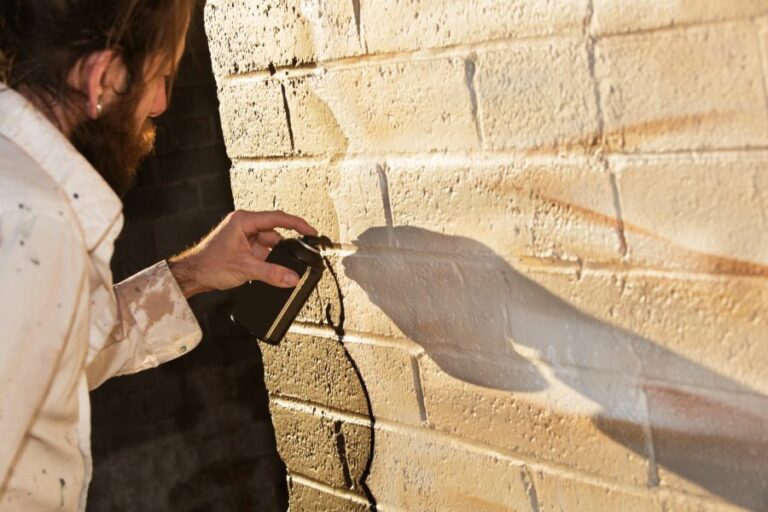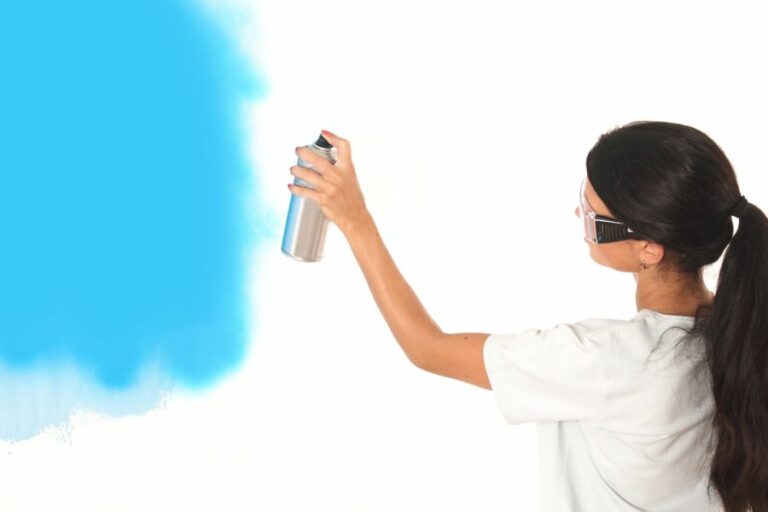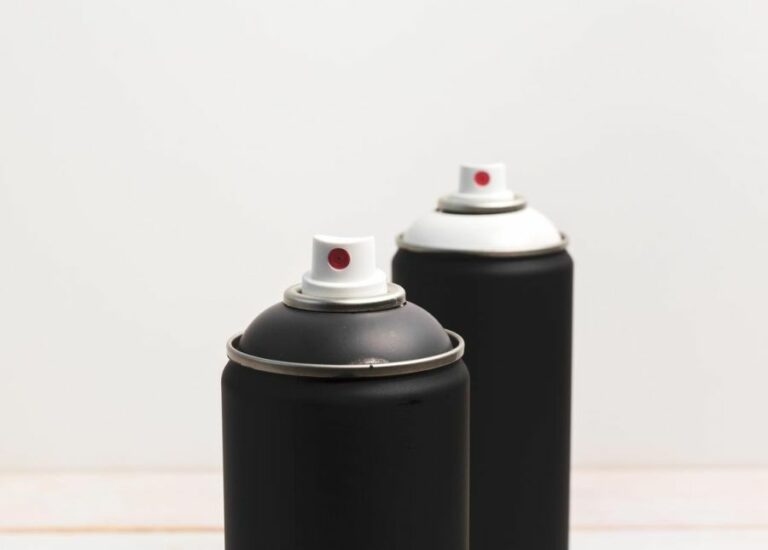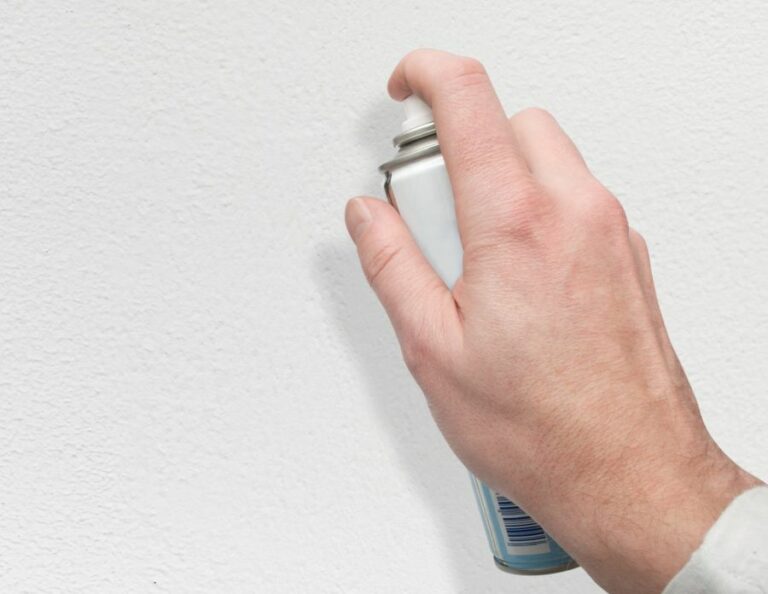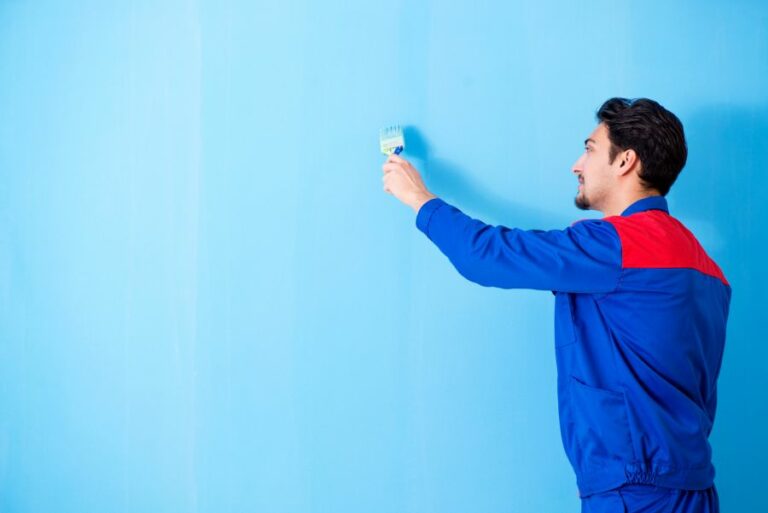Artistic Spray Paint Techniques Outdoors. What Pros Say
Are you looking to expand your artistic horizons and explore the world of outdoor spray paint techniques? Well, you’ve come to the right place. Let me assure you that we have the perfect guide to help you get started with this unique and creative artwork form. With our expert knowledge and experience, we’ll walk you through everything from choosing the right materials to mastering various outdoor spray paint techniques.
Artistic spray paint techniques outdoors:>
Outdoor spray paint techniques include stenciling for intricate designs, layering to add depth and texture, fading for seamless color blending, and using household items to create unique textures. Proper materials, surface preparation, and attention to safety are essential for long-lasting, vibrant outdoor artwork.

Ready to take your spray paint skills al fresco? This guide helps you elevate your artistry with amazing outdoor spray paint techniques. Unlock your creative potential and utilize nature’s canvas by diving into this comprehensive exploration. Read on and let the creative juices flow.
Contents
- 1 Creative Outdoor Spray Paint Methods
- 2 Transforming Spray Paint into Artwork
- 3 Top Spray Painting Techniques Explained
- 4 Defining Street Art with Spray Paint
Creative Outdoor Spray Paint Methods
Spray paint is a versatile medium, allowing artists to create an array of outdoor masterpieces. When it comes to outdoor spray painting, various techniques can transform any surface into a visually stunning and unique piece of art.
• Spray Paint Basics for Outdoors
Before diving into specific techniques, it’s essential to understand the fundamentals of outdoor spray painting. Using the proper materials and tools will ensure long-lasting, vibrant artwork.
– Selecting the Right Spray Paint
Choose spray paint specifically designed for outdoor use to withstand various weather conditions. High-quality outdoor spray paints usually offer UV resistance, preventing the colors from fading in sunlight.
– Appropriate Surfaces
Popular outdoor surfaces include walls, fences, and sidewalks. Ensure the surface is clean and free of dirt and debris before painting. Some surfaces may require a layer of primer to achieve the best results, ensuring the paint adheres correctly and lasts longer.
– Proper Ventilation
Work in a well-ventilated area to ensure safety and prevent inhaling toxic fumes. Outdoor spaces generally provide adequate airflow, but it’s also essential to work on a wind-free day, preventing the spray paint from drifting onto unwanted surfaces.
• Stenciling: Create Intricate Designs with Ease
Stencils are a popular technique for creating intricate and detailed designs outdoors. They can be pre-made, purchased, or hand-cut from a variety of materials, such as paper, plastic, or vinyl.
Stencils allow artists to replicate designs quickly and with precision, creating a cohesive and visually striking scene.
I recommend using a low-tack adhesive spray on the back of the stencil to prevent it from moving during painting. It’s also helpful to use paint meant for stenciling or at least use shorter, controlled bursts when spraying to keep the artwork clean and precise.
Learn more about stenciling and download free stencil designs from Stencil Library.
• Layering: Add Depth and Texture to Your Artwork
Layering is a technique that involves applying multiple colors or patterns, one on top of the other, to create depth, complexity, and interesting visual effects. This method can range from simple color overlaps to complex graffiti-style murals.
Take note of the drying time for each paint layer before applying the next, as overly wet paints can blend and create unwanted colors.
When layering, it’s essential to consider the order of colors, as lighter hues can become lost if applied beneath darker shades. Start with a lighter base and gradually incorporate darker colors to build depth and dimension in the piece.
• Fading: Seamless Blending of Colors
Fading, also known as gradients or color blending, is a technique where colors gradually blend into each other, creating a seamless transition from one hue to another.
This method can be achieved by directing the spray paint at a slight angle, keeping the can in constant motion while gradually changing the colors.
To create a smooth fade, hold the spray paint can closer to the surface and move it parallel to the area being painted. Maintain consistent speed and pressure to create an even transition, and practice on a scrap surface to perfect your fading technique.
• Texture: Achieve Unique Effects with Household Items
Adding texture to spray paint art can bring a new dimension to a piece, adding depth and visual interest. Various household items can be utilized to create unique textures and patterns.
For example, using crumpled newspapers, plastic bags, or sponges can add texture by dabbing them onto the wet paint. Additionally, combs, toothbrushes, or palette knives can be used to create lines, swirls, and other effects.
• Safety and Clean-Up
When working with spray paint outdoors, prioritize safety and proper clean-up procedures to ensure a safe environment and respect the public space. Utilize a face mask and gloves to protect yourself from fumes and skin contact.
For clean-up, use disposable drop cloths or tarps to prevent residual paint from reaching the ground or surrounding area.
In conclusion, incorporating outdoor spray paint techniques such as stenciling, layering, fading, and adding textures can result in stunning, long-lasting outdoor artwork. With practice and creativity, your outdoor spray paint creations will captivate and inspire viewers.
Transforming Spray Paint into Artwork
Spray paint has long been associated with graffiti and street art, but with the right techniques, you can use it to create beautiful and striking pieces of artwork.
• Choosing the Right Materials
– Spray Paint
There are various types of spray paint available, each with its own unique properties. To create professional-looking art, it’s crucial to invest in quality spray paint.
Look for paint that has high pigment levels, quick drying times, and low-pressure output. These traits make for better control and vibrant finished pieces.
Some popular brands used by artists include:
- Montana Gold
- Belton Molotow Premium
- Ironlak
– Surface
The surface you choose to paint on can greatly impact the finished product. Common choices include:
- Canvas: Stretched and primed canvas works well for spray paint art due to its strong and smooth surface.
- Wood Panels: These provide a sturdy and textured base to work on. Ensure that they are sealed and primed before painting.
- Paper: Heavyweight paper, such as watercolor paper or bristol board, is suitable for spray paint. Always place a protective sheet under the paper to prevent paint from bleeding through.
– Accessories
Equip yourself with the following items to make the spray painting process more efficient and enjoyable:
- Painting mask: Protect your respiratory system from inhaling fumes and particles.
- Gloves: Keep your hands clean and protect your skin from paint chemicals.
- Caps: Different spray paint caps create different spray patterns and effects. Experiment with various caps to find the ones that suit your style.
• Preparing for Your Painting
– Sketching Your Design
Before you start spray painting, it’s a good idea to sketch your design on the chosen surface using a light pencil or charcoal.
This not only helps with planning but also ensures you won’t make any major mistakes with the permanent spray paint. Adjust your design as necessary until you feel confident about the layout.
– Setting Up Your Workspace
Choose a well-ventilated area for spray painting, such as an open garage or outdoors. Cover your workspace with drop cloths or newspapers to protect against paint overspray. Position the surface on an easel or against a wall, making sure it’s secure and stable.
• Mastering Spray Paint Techniques
– Control and Pressure
Learning to control the pressure and distance of your spray is crucial for achieving a professional finish. Practice on a scrap piece of material until you feel comfortable with the spray output, understanding that closer distances provide denser coverage and farther distances create lighter mists.
– Layering and Blending
One of the unique advantages of spray paint is its ability to create smooth gradients and blends. Start by applying a base color, and then layer additional colors while the paint is still wet to create seamless transitions.
Experiment with different colors and layering orders to achieve the perfect combination for your artwork.
– Stencils and Masks
To add precision and detail to your spray paint art, consider using stencils or masks. This can be as simple as cutting shapes from cardstock or as complex as designing and printing custom vinyl stencils.
Apply the stencil to your surface and carefully spray paint, ensuring that the paint doesn’t bleed under the stencil edges.
– Textures and Effects
Use various tools and techniques to add texture and visual interest to your spray paint art. Some examples include:
- Brushwork: Quickly apply wet spray paint with a brush or palette knife for a painterly effect.
- Drips: Deliberately create drips by spraying heavily in one area or tilting the surface while it’s still wet.
- Splatter: Flick a loaded brush or use a toothbrush to create random splatter effects across your piece.
• Finishing and Protecting Your Art
Once your artwork is complete, allow it to fully dry before handling or moving it. Drying times may vary depending on the paint brand and thickness of the application. To protect your finished piece, apply a clear coat of varnish or sealant, ensuring it’s compatible with spray paint.
Following these steps and techniques will help you create professional, gallery-worthy spray paint art. Remember to practice, experiment, and find your unique style as you explore the world of spray paint.
Step | Description |
|---|---|
1 | Choose a suitable location with proper ventilation for your spray paint art. |
2 | Prepare and protect your work area with drop cloths or newspapers. |
3 | Select the colors of spray paint you want to work with. |
4 | Choose a canvas or material to spray paint on, such as a poster board, wood, or canvas. |
5 | Apply a layer of primer if you’re working on a material that requires it, such as wood or metal. |
6 | Sketch your design on the canvas before painting, or create a stencil to assist in creating your art. |
7 | Shake your spray paint can well before using, and hold it at a safe distance from the canvas (about 10-12 inches away) while spraying. |
8 | Start with lighter colors and build up to darker colors, layering and blending as needed. |
9 | Create textures and effects using items such as sponges, brushes, or even your fingers. |
10 | Allow your artwork to dry thoroughly before touching or displaying it. |
11 | Seal your spray paint art with a clear coat if desired or if it will be exposed to the elements. |
Top Spray Painting Techniques Explained
Spray painting is an efficient and precise technique widely used across the world. It offers numerous advantages, such as quick and even coverage, a smooth finish, and limited paint waste. However, mastering the art of spray painting requires knowledge, patience, and experience.
• Prepare the Surface and Your Work Environment
– Clean the Surface
Before you start spray painting, always ensure that the surface you will be working on is clean and dust-free. For best results, use a painter’s tack cloth or a damp cloth to remove any dirt, grease, or grime. This will ensure a better bond between the paint and the surface.
– Sand the Surface
If you are working on a rough surface, sand it down with fine-grit sandpaper to create a smooth and even finish. This helps the paint adhere better and prevents any imperfections from showing through. Be sure to remove any remaining dust or debris before moving on to the next step.
– Secure a Well-Ventilated Workspace
Work in a well-ventilated area to promote proper drying and reduce the risk of inhaling harmful fumes. Outdoor spaces work best, but a well-ventilated garage or an indoor space with open windows and fans will also suffice.
• Choose the Right Spray Paint and Equipment
– Select the Appropriate Paint
Not all spray paints are created equal. Ensure that you select the right type of paint for your specific project. For example, use high-temperature paint for surfaces that will be exposed to heat, or use paint specifically formulated for plastic when working with plastic materials.
– Invest in Quality Equipment
A quality spray gun, complete with a proper nozzle and air pressure regulator, will drastically improve the final results of your project. Look for a gun that is lightweight, durable, and easy to clean. Additionally, consider selecting a nozzle with adjustable spray patterns to fit the needs of your project.
– Wear Proper Protective Gear
Always wear a face mask, gloves, and goggles to protect yourself from paint fumes, particles, and overspray. Wearing protective gear is essential, especially when working with paint that contains volatile organic compounds (VOCs) or other harmful chemicals.
• Master the Spray Painting Technique
– Shake and Test the Paint
Before you begin spray painting, shake the paint can well for at least one minute to ensure proper color mixing and even coverage. Test the spray on a piece of cardboard or scrap material to get a feel for the spray pattern and pressure.
– Maintain a Consistent Distance
Maintaining a consistent distance between your spray gun and the surface is crucial for an even, streak-free finish. A 6 to 10-inch distance works best for most projects.
Be mindful that holding the spray gun too close to the surface will cause the paint to concentrate in one area, creating uneven coverage and drips.
– Work in Controlled, Overlapping Strokes
Apply the spray paint in a sweeping motion, moving across the surface in controlled and overlapping horizontal strokes. Each stroke should overlap the previous one by approximately one-third to ensure complete and even coverage.
– Apply Multiple Thin Coats
It is always better to apply multiple thin coats of paint rather than one thick coat. This helps prevent drips and allows for a smoother final finish. Allow each coat to dry for the recommended time before applying the next coat.
– Sand and Finish
After the paint has completely dried, lightly sand the surface with fine-grit sandpaper to remove any imperfections and create a smooth finish. Wipe away any dust or debris and apply a clear coat or topcoat for added protection and durability.
• Practice Makes Perfect
Much like any other skill, mastering the art of spray painting requires practice and patience. Experiment with different spray gun settings, paint types, and techniques to learn what works best for your specific projects.
With time and experience, you will achieve professional results that will leave you feeling proud and satisfied.
Technique | Description |
|---|---|
Priming | Applying a primer to the surface improves adhesion, covers imperfections, and creates a smooth base. |
Shaking the can | Shaking the spray paint can for at least a minute to ensure proper mixing and even distribution of the pigment. |
Proper distance | Keep the spray can about 10-12 inches from the surface to prevent drips and uneven coverage. |
Continuous motion | Maintaining a continuous and steady motion while painting to avoid buildup and uneven coats. |
Sweeping motion | Using a sweeping motion to apply the paint, starting and ending each pass slightly beyond the edges of the surface. |
Overlapping strokes | Overlapping each stroke by around 50% to ensure consistent and full coverage on the surface. |
Multiple light coats | Applying multiple light coats of paint, waiting for each to dry before applying the next, for a smoother and more durable finish. |
Clear coat application | Applying a clear coat to protect and add gloss to the painted surface, if desired. |
Defining Street Art with Spray Paint
• Introduction to Spray Paint Street Art
Spray paint street art, often referred to as aerosol art or graffiti, is a unique form of visual expression that has gained widespread recognition and appreciation over the past few decades.
It combines the use of spray paint, a portable and quickly drying medium, with various techniques, ranging from elaborate murals to simple tags, allowing artists to create visually striking pieces on diverse surfaces, both legal and illegal.
– The Origins and Evolution of Aerosol Art
Believed to have originated in the late 1960s in Philadelphia, the aerosol art movement spread rapidly to New York City during the 1970s. Pioneers like Cornbread and Cool Earl originally introduced the concept of painting one’s name or signature, referred to as a tag, in a stylized manner.
From these humble beginnings, the artistic forms evolved, incorporating increasingly intricate designs and social commentary. Today, aerosol art can be found across the globe and has had significant influence on popular culture, fashion, and advertising.
• A Diversity of Styles in Spray Paint Street Art
Among aerosol artists, there is a vast range of skills and techniques, often specific to the individual artist or local scene. Some commonly recognized styles include the following:
– Tags
Tags are the most basic form of aerosol art, often consisting of an artist’s name or alias in a stylized script. They serve as a way for artists to mark their territory and gain recognition within the street art community.
Despite their simplicity, tags are an essential aspect of graffiti culture and have given rise to whole genres of hand-lettering and typography.
– Throw-ups and Bombing
Involving a more elaborate design than a tag, throw-ups typically consist of a single or two-color outline, while bombing involves covering as much surface area as possible with one’s tag or design, usually executed quickly to avoid getting caught.
Both of these street art forms require speed and precision and often demonstrate an artist’s ability to create impactful pieces under pressure.
– Pieces and Murals
Arguably the most visually impressive style of aerosol art, pieces, and murals are large-scale, detailed, and often incorporate complex backgrounds, multiple colors, and varied techniques.
Pieces are generally a standalone design often depicting elaborate lettering, whereas murals expand beyond the scope of a singular piece and can encompass entire walls or buildings. These works carry a strong visual impact and often relay a message or tell a story.
• Tips and Techniques for Creating Spray Paint Art
If you’re interested in trying your hand at aerosol art, there are a number of tips and techniques you should consider to achieve the best possible results:
– Choose Your Materials Wisely
The quality of your spray paint can have a significant impact on your artwork. Invest in high-quality aerosol paints designed specifically for street art, such as Montana, Ironlak, or Molotow.
These brands offer not only a wide range of vibrant colors but also various nozzle sizes, allowing for greater control and precision.
– Practice Your Techniques
Like any skill, mastering the art of spray painting requires practice. Begin by experimenting with different pressures, angles, and distances from your surface to familiarize yourself with how the paint behaves.
Keep in mind that the weather can also affect your results, with temperature and humidity often dictating drying times and paint adherence.
– Understand the Legalities
While aerosol art has become widely appreciated, it remains a controversial form of expression, often marred by its association with vandalism and illegal activity.
Before embarking on any street art project, make sure to understand the legalities in your area and to obtain any necessary permissions to avoid potential repercussions.
• The Role of Spray Paint Street Art in Social and Cultural Movements
Aerosol art has historically been associated with counterculture, social activism, and political commentary. Its accessibility as a medium and its use of public spaces often allow for broader visibility and impact.
From environmental messages promoted by artists like Blu to powerful statements against racism, such as those seen in the wake of the Black Lives Matter protests, spray paint street art continues to be a critical tool for artists to voice their opinions and bring about change.
• Conclusion: The Enduring Power of Spray Paint Street Art
Aerosol art has come a long way since its inception in the 1960s. Despite the challenges it has faced, including issues around legality and vandalism, it continues to thrive and diversify.
Spray paint street art has not only captured the imagination and attention of millions around the world but has also been a vehicle for social and cultural change.
As a dynamic and constantly evolving art form, it serves as a continual reminder that art, in all its forms, has the power to inspire, provoke, and ultimately make a difference.

